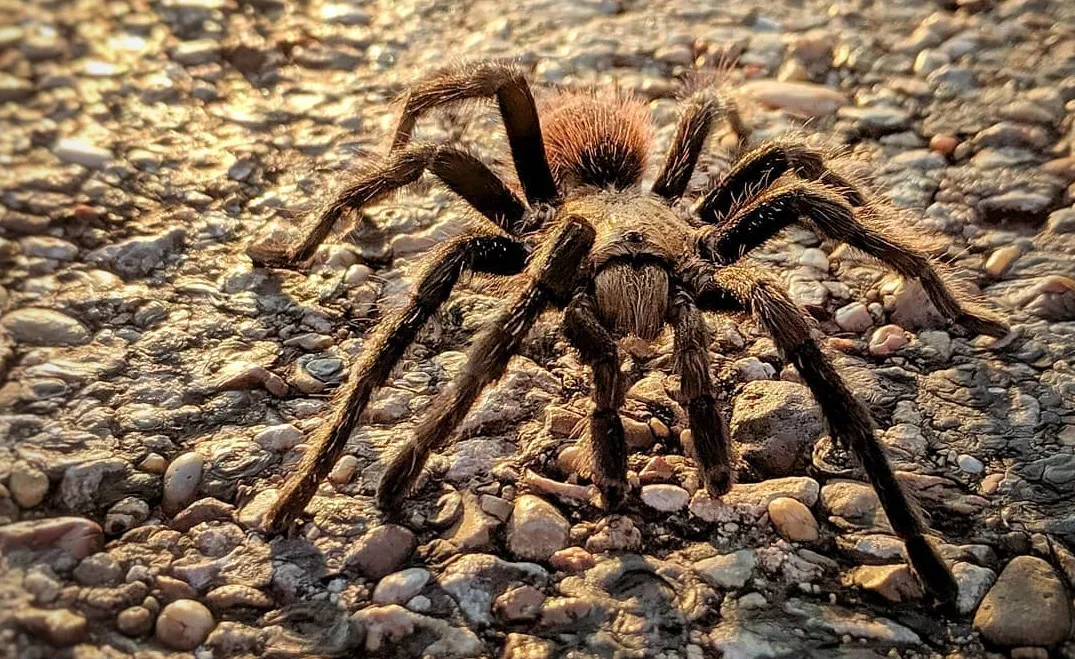Tarantula on Window in Texas Top 7 Facts
Seeing a tarantula on your window in Texas can be a startling experience. These large, hairy spiders are a common sight in many parts of the state, and while they may look intimidating, understanding their behavior and habits can help you appreciate these fascinating creatures. This article explores seven key facts about tarantulas you may encounter on your window in Texas, covering everything from their habitat and hunting habits to safety tips and preventative measures. Prepare to be informed and perhaps even a little charmed by these eight-legged visitors.
What are Tarantulas and Where Do They Live?
Tarantulas belong to the Theraphosidae family, a group of large and often hairy spiders. They are found in various habitats, including deserts, grasslands, and forests, with many species thriving in warm, arid environments. In Texas, they are well-adapted to the state’s climate, especially in regions with less rainfall and plenty of ground cover. They are primarily nocturnal creatures, spending the day in burrows or under rocks, and emerging at night to hunt. Their lifespan can be quite long, with females living for over 20 years in some cases, making them a long-term presence in their ecosystems.
Common Texas Tarantula Species

Several species of tarantulas can be found in Texas. The most common include the Texas Tan Tarantula (Aphonopelma hentzi) and the Oklahoma Brown Tarantula (Aphonopelma anax). These spiders vary in size and coloration, but they all share the characteristic large size and hairy appearance. The Texas Tan Tarantula, for instance, is known for its reddish-brown coloration and can often be seen around homes and structures. Knowing the species can help you better understand its behavior and potential interactions with your property.
Why Tarantulas Might Be on Your Window
Several reasons may explain why you find a tarantula on your window. Often, they are attracted by the lights, which can lure insects that they prey on. The window itself offers a flat surface for the tarantula to rest or explore. It could also be a matter of temperature control, as the window might offer a cooler surface compared to the warmer ground during the summer months. Furthermore, during mating season, males may wander in search of a mate, sometimes ending up near homes in their quest. Understanding these factors can give you a better idea of why a tarantula chose your window for a visit.
Tarantula Hunting Behavior
Tarantulas are ambush predators, meaning they lie in wait for their prey. They primarily hunt insects, but larger species can also take down small vertebrates, such as lizards and mice. They use their fangs to inject venom, which paralyzes their prey, and digestive enzymes to liquefy the insides, making it easier to consume. Their hunting strategy often involves waiting near their burrow entrance, sensing vibrations in the ground or on their web, and then quickly attacking anything that comes close. This predatory behavior is crucial to their survival and their role in the ecosystem.
Tarantula Mating and Reproduction Habits

Mating season for tarantulas usually occurs in the late summer or early fall. Male tarantulas, in search of a mate, will wander, increasing the likelihood of encountering them on windows. The males will create a sperm web and deposit their sperm, then use their pedipalps to transfer the sperm to the female. After mating, the female will lay hundreds of eggs in a silk egg sac, which she fiercely guards. The spiderlings hatch and remain with the mother for a short period before dispersing to start their own lives. This process is a fascinating part of their life cycle, especially when observing the behavior that leads to tarantula sightings on windows.
Are Tarantulas Dangerous to Humans and Pets?
Tarantulas are not generally considered dangerous to humans or pets. Their venom is relatively weak, and their bite is similar to a bee sting. However, some people may experience an allergic reaction. The biggest hazard is the potential for a bite if you handle a tarantula roughly. They also have urticating hairs on their abdomen, which they can flick off as a defense mechanism. These hairs can cause skin irritation and, in some cases, respiratory issues if inhaled. For pets, tarantulas pose a minimal threat, though a bite could cause discomfort. Generally, it’s best to observe tarantulas from a distance and avoid handling them to ensure safety.
What to Do If You Find a Tarantula on Your Window
If you find a tarantula on your window, the best course of action is to observe it from a safe distance. Most of the time, the tarantula will eventually move on its own. You can gently encourage it to move by turning off exterior lights or using a hose to spray a gentle stream of water nearby, but never directly at the spider. If you need to remove the tarantula, you can use a large container and a piece of cardboard to carefully capture it and release it outdoors away from your home. Always avoid direct contact and handling to prevent being bitten or causing distress to the tarantula.
Tarantula Relocation and Safety Tips

If you need to relocate a tarantula, safety should be your top priority. Wear gloves to protect yourself from potential bites or urticating hairs. Gently coax the tarantula into a container such as a plastic storage bin or a large jar. Place a piece of cardboard between the tarantula and the lid to prevent it from escaping. Release the tarantula far away from your home, preferably in a natural habitat with suitable shelter and food sources. Never try to handle the tarantula directly, and always maintain a respectful distance. This ensures both your safety and the well-being of the tarantula.
How to Prevent Tarantulas from Coming to Your Window
Preventing tarantulas from visiting your window involves several strategies. Minimize outdoor lighting, as this attracts insects, which in turn attract tarantulas. Seal cracks and crevices in your home’s foundation and around windows and doors. Trim vegetation near your home to reduce potential hiding spots. Regular pest control to manage insect populations can also deter tarantulas. By taking these steps, you can make your property less appealing to these eight-legged visitors while still appreciating their natural role in the ecosystem.
Debunking Common Myths About Tarantulas
Many myths surround tarantulas, often exaggerating their danger. One common myth is that all tarantulas have deadly venom, which is untrue. Another myth is that they are aggressive and will attack humans, whereas they generally prefer to avoid confrontation. Debunking these myths through education and understanding can help dispel fear and promote a more positive view of these creatures. It’s crucial to rely on scientific facts and accurate information rather than sensationalized stories or outdated beliefs about tarantulas.
In conclusion, seeing a tarantula on your window in Texas is a common occurrence. By understanding their behavior, habitats, and how to interact with them safely, you can appreciate these fascinating creatures. From their hunting behavior to their mating rituals, tarantulas play a significant role in the ecosystem. With these seven facts, you are better prepared to handle encounters with these eight-legged visitors. Remember, respect and knowledge are key to coexisting peacefully with Texas’s tarantulas.
